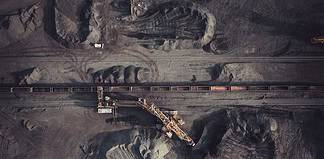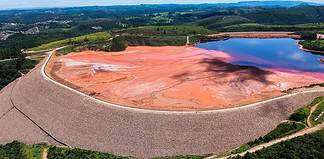
April 23, 2015
Jane Goldsmith spoke with Yellow Rock Resources chief executive Vince Algar to discuss Australia’s developing vanadium market and the metal’s promising role in flow batteries and renewable energy storage.
Q. What is Yellow Rock’s background story and how did your tenement package develop?
A. The company listed back in 2007 as a uranium company, hence the name. We began with a couple of assets, including one called Nowthanna Hill, which we still have. Then we also picked up a few larger leases in the Northern Territory.
Between 2007 and 2010, we picked up the Gabanintha project, near Meekatharra. At the time, there was a bit of a transition from a uranium boom into the iron ore boom. Gabanintha is effectively an iron ore deposit, though it’s not a standard magnetite, which was all the rage at the time. [Its] a different style of iron ore deposit, and slightly smaller, but it’s got vanadium and titanium in it, and this was what set it apart.
Today, the iron is less important than the world-class vanadium that we’ve found. As with many multi-commodity projects, the different economics of the different metals in the project must be assessed. As one of the highest-grade vanadium deposits on a global scale, Gabanintha’s time has come.
Q. What is vanadium, and what industrial applications does it have?
A. The element is a unique metal on the periodic table. Its primary use has been as an alloy for strengthening steel. The most important type of steel it’s used in is reebar, which forms the metal grids used in the structural foundations of buildings; it strengthens the steel within a concrete lattice to make a stronger building.
Quite a few years ago, China suffered a serious earthquake – that disaster saw many buildings fall apart because the building code in China hadn’t insisted on a strong enough steel.
As a result, more vanadium and more manganese were added in increased quantities to Chinese steel in particular, and because of the size of the Chinese market, the use of more vanadium in steel has led to a growth in vanadium consumption globally. Five or six years ago, less than 80,000t was used globally per year; that’s now increased to well over 130,000t per year with demand expected to continue growing at a compound annual growth rate of 6.5 per cent. This is great news for companies like Yellow Rock; it’s a great market opportunity.
Vanadium’s market price is not totally disconnected from iron but it does have its own markets, and even with no new iron consumption, vanadium’s use is expected to increase dramatically alongside the renewable energy storage market.
Q. How does a vanadium flow (redox) battery work and what are its main advantages?
A. Vanadium’s secondary use – a growing use, and one we hope to pin ourselves to quite strongly – is its use as a battery electrolyte. The vanadium is crushed very finely, dissolved in acid and put into a battery cell. Vanadium’s very unique characteristics make it effective in storing very large amounts of energy and for long periods of time. They can also be recharged an indefinite number of times.
For Yellow Rock, we’re focused on the growing market where vanadium batteries are being used to improve the flow of energy through renewable energy infrastructure.
Renewable sources (wind and solar) have great potential to create energy, but their flow and power feed into the grid is not constant. They also don’t feed at the particular times they’re needed – for example, the sun shines during the day, but domestic energy consumption tends to peak in the evening. This can cause instability in the grid.
One of the main reasons we need storage capacity in a grid is to even out the power flow. Other batteries, like lithium, don’t have the capacity to store very large amounts of energy so aren’t particularly suited to this market. They also can’t maintain charge for a long period of time, and they can’t be recharged over many cycles.
So flow batteries – particularly vanadium flow batteries – have some very unique and useful characteristics, answering these issues. They will be a significant player in the battery business in the coming years – they’re expected to fill about 30 per cent of the global renewable energy storage market.
Q. What are some disadvantages, and how could these be minimised or resolved?
A. There’s going to be substitution in the early part of the battery development as we see now, as lithium can be cheaper. While vanadium is promising, it is yet to reach market penetration. That is good news for Yellow Rock, as we’re still in development. There are some promising signs, but substitution remains a risk if it comes down to a price point.
In saying that, on a commercial level (which is where we are focused), the cost benefits with the longer life and the re-useable aspects are notable.
Q. Yellow Rock recently announced the launch of a new drilling program at its flagship, Gabanintha vanadium project. How is work progressing?
A. We’re continuing from existing drilling – we’ve already got an inferred resource of 125 million tonnes and some indicated tonnes; it’s well understood in terms of its global scale. Now we’re drilling a small 2km section of the 12km length. We aim to bring the resource up to JORC 2012 level with the infill drilling.
We’re de-risking a portion of it, in terms of an open pit development and capturing better metallurgical data. It’s going very well in terms of results, in spite of some bad weather and rain. We’re expecting some very good grades, in line with our proven grades of 0.98 per cent, which we understand to be the third highest grade of any vanadium deposit under consideration globally.
We know Gabanintha, from a historical perspective, has a world-class grade – completing this current drilling will help drive that message home.
Q. How does Yellow Rock’s market capitalisation given its deposit grade compare to its ASX-listed, vanadium-focused peers?
A. There are a range of other companies around with vanadium projects, some of which with quite large market caps, [but] I prefer to compare ourselves to some companies overseas, as their resources are more like Gabanintha. Toronto Stock Exchange-listed Largo Resources operates a vanadium operation in Brazil similar to what we would operate, and they’ve got a market cap of about $100 million.
Bushveld Minerals, on the London Stock Exchange, has a South African project, also comparable to ours, and they have a market cap of about $20 million.
Our market cap of about $7 million – even though we’ve only really in recent times started to step on the pedal – is fairly low. But through new drill results and developing a feasibility study, we should see that grow.
Q. What company developments are expected into the future?
A. The purpose of our current drilling is to update the concept study and the resource. The resource precedes everything, and the current drills will help us de-risk the project to bring it to a higher degree of reporting.
At the same time, we’ll be doing metallurgical test work, which will give us a definitive idea on how we get the content out of the ground.
In the first quarter of the next financial year – June to September – we’ll start updating the mining study and take our concept study and plug some real numbers in, to go towards what will likely be a scoping study. By the end of the year, we’ll be looking at what we need to do to take the scoping study through to feasibility.
We’ve also applied for a mining licence for the bulk of the resource; now we need to begin negotiating various other compliances to get that granted. With the $3.5 million funding we’ve got in place, our aims for the year are very achievable.







































